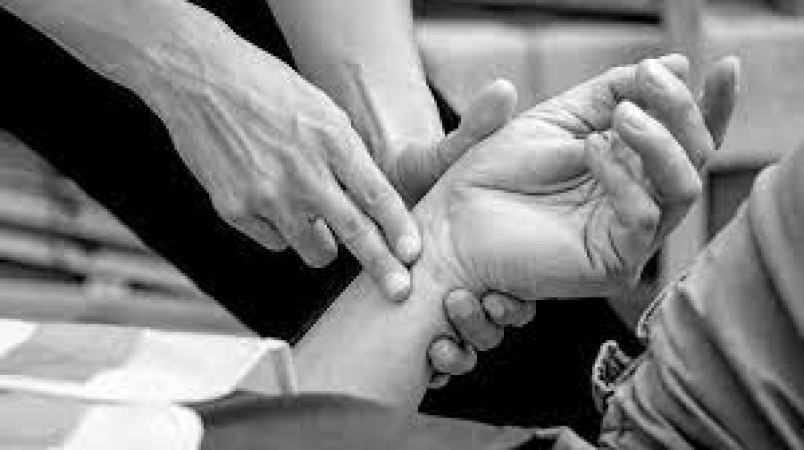
In our fast-paced lives, health often takes a backseat. One critical aspect that is frequently overlooked is the importance of blood circulation in our extremities. Lack of blood flow to the hands and legs can lead to alarming symptoms that should not be ignored. In this comprehensive guide, we will delve deeper into the signs, causes, and actionable steps to improve blood circulation and safeguard your well-being.
One of the most common and noticeable signs of poor blood circulation in the extremities is the persistent sensation of numbness and tingling, often described as "pins and needles." This occurs when there's inadequate blood supply, affecting the nerves in the hands and legs. Such sensations can be intermittent or chronic, serving as a clear indicator that blood flow needs attention.
Experiencing persistent coldness in your hands and legs, even in moderate temperatures, is a telltale sign of compromised blood circulation. In optimal conditions, warm blood should efficiently reach these areas, providing them with the necessary heat. Cold extremities may suggest that this process is not occurring as it should.
Swelling in the hands and legs is another red flag for poor blood circulation. When blood struggles to circulate effectively, it can lead to fluid retention, causing swelling. It is crucial to distinguish between occasional swelling and persistent edema, as the latter may signify an underlying issue that requires attention.
Changes in skin color, such as paleness or a bluish tint, can indicate poor blood circulation. Healthy circulation ensures a rosy complexion, but when oxygen-rich blood is not reaching the extremities, the skin can appear pale or discolored. Observing these changes prompts the need for further investigation into circulatory health.
The efficiency of the circulatory system plays a vital role in the body's healing processes. If wounds in the hands and legs are taking an unusually long time to heal, it may be an indication of insufficient blood supply. Proper circulation is essential for delivering nutrients and oxygen to the affected areas, promoting timely healing.
A sedentary lifestyle is a major contributor to poor blood circulation. Lack of physical activity weakens the circulatory system, making it less efficient in delivering oxygen and nutrients to different parts of the body. Incorporating regular exercise into your routine is crucial for maintaining optimal blood flow.
The adverse effects of smoking extend beyond the lungs. Smoking damages blood vessels, causing them to constrict and reducing their ability to transport blood effectively. Quitting smoking is a significant step toward improving overall circulatory health.
Diet plays a pivotal role in circulatory health. A diet high in saturated fats and low in essential nutrients can contribute to the buildup of plaque in the arteries, restricting blood flow. Opting for a heart-healthy diet rich in antioxidants, omega-3 fatty acids, and vitamins supports cardiovascular well-being.
Adequate hydration is essential for maintaining optimal blood viscosity. Dehydration thickens the blood, making it harder to circulate through the body. Ensuring you drink enough water daily is a simple yet effective way to support healthy blood flow.
Certain health conditions can significantly impact blood circulation in the extremities. Conditions such as diabetes and peripheral artery disease can lead to narrowed arteries, hindering the smooth flow of blood. Managing these underlying health issues is crucial for improving circulatory health.
Regular physical activity is a cornerstone of maintaining optimal blood circulation. Engaging in activities like walking, swimming, or cycling enhances the efficiency of the circulatory system. Aim for at least 30 minutes of moderate exercise most days of the week to promote blood flow.
A nutritious diet is key to supporting circulatory health. Include foods rich in antioxidants, such as berries and leafy greens, omega-3 fatty acids found in fatty fish, and vitamins like vitamin C and E. These nutrients contribute to overall cardiovascular well-being.
For those who smoke, quitting is a critical step toward improving blood circulation. The cessation of smoking allows blood vessels to heal and regain their ability to transport blood effectively, promoting better oxygen delivery to various parts of the body.
Proper hydration is often underestimated in its impact on circulatory health. Drinking an adequate amount of water ensures that blood maintains the right viscosity, facilitating smooth circulation. Make a habit of consuming enough water throughout the day.
Elevating your legs is a simple yet effective technique to encourage blood flow back to the heart. This is particularly beneficial for individuals who spend long hours sitting or standing. Elevate your legs whenever possible to reduce the strain on your circulatory system.
Compression socks or sleeves can provide additional support in improving circulation, especially in the legs. These garments exert gentle pressure, aiding the blood vessels in moving blood more efficiently. Consult with a healthcare professional to determine if compression garments are suitable for your situation.
If you experience persistent symptoms of poor blood circulation, it is imperative to consult a healthcare professional. A thorough evaluation will help identify the underlying causes and determine an appropriate course of action to improve circulatory health.
In some cases, medications or medical interventions may be recommended to address underlying issues affecting circulation. These may include blood thinners, vasodilators, or procedures to open narrowed arteries. It is essential to follow medical advice and prescriptions diligently. Prioritizing circulatory health is paramount for overall well-being. By recognizing the signs of poor blood circulation in your hands and legs and taking proactive steps to address the root causes, you can unlock vitality and ensure a healthier, more active life. Incorporating these lifestyle changes, seeking professional guidance when needed, and staying consistent in your efforts will contribute to sustained improvements in your circulatory system.
Is Your Partner Extremely Suspicious? Here's How to Build Trust
Latest Updates on Israel's Actions in Gaza: Key Events on Day 87